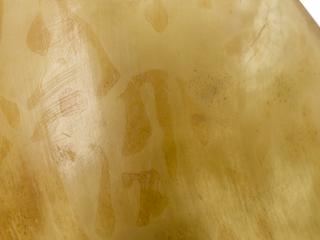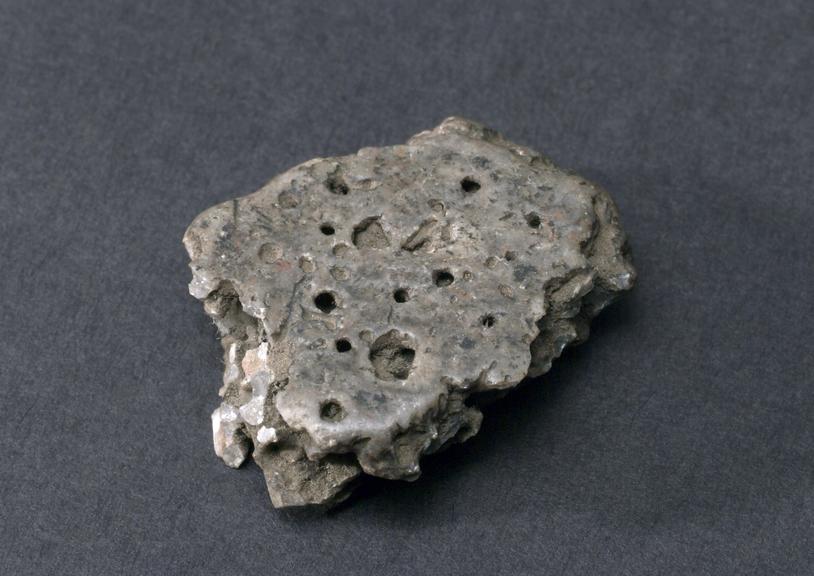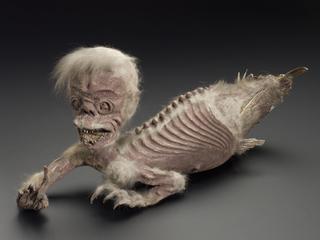




Fragment of pitted soft grey stone, amuletic, said to protect against toothache, from South Devon, English, 1871-1910
The growing influence of biomedicine in the 1800s did not necessarily replace established forms of treatment based on belief and superstition. What could be referred to as folk medicine – customs that often went back generations – continued to be practised. For example, this pitted grey stone on the right was believed to cure toothache. It was hoped that the pain would be transferred from the person to the stone.
The stone was a gift to the Wellcome collections in 1916 from Edward Lovett (1852-1933), a collector of British amulets and charms. It is pictured here with four other amulets against toothache: two large animal teeth (A132477 and A132541), a stone (A132474) and a triple hazelnut (A132536).
Details
- Category:
- Ethnography and Folk Medicine
- Collection:
- Sir Henry Wellcome's Museum Collection
- Object Number:
- A132503
- Materials:
- stone, soft, volcanic
- Measurements:
-
overall: 10 mm x 29 mm x 23 mm, .006 kg
- type:
- amulet
- credit:
- Lovett, E.R.




